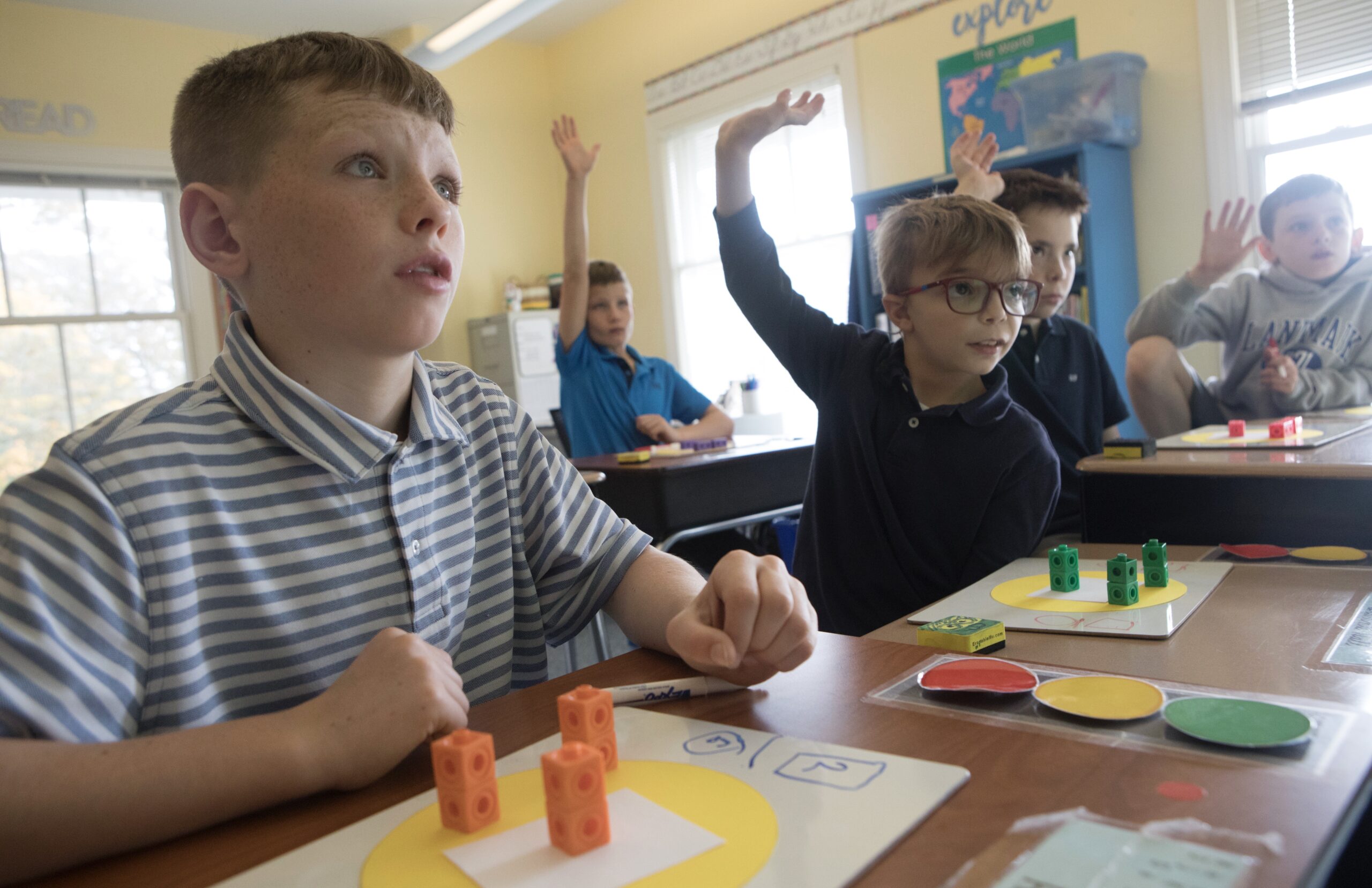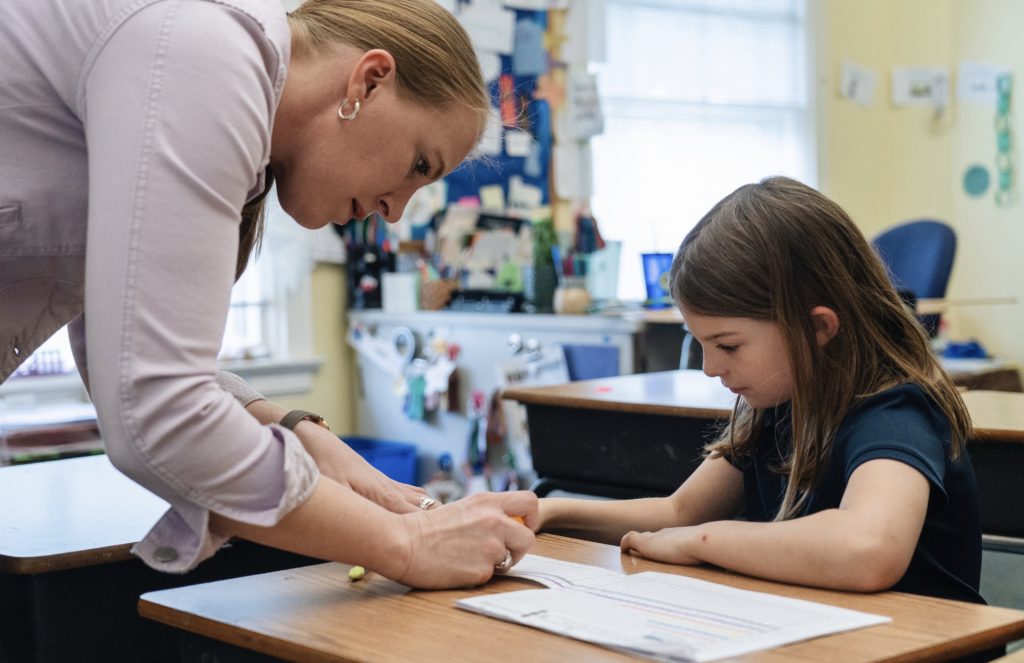“I don’t know.”
It’s the ultimate classroom buzzkill. A dreaded non-answer. A gut punch of a phrase that routinely sends me plummeting on the roller coaster of even the best-prepared lesson. After battling with one particularly cautious class, I developed the following approach.
Brainstorm
The first step is to address the elephant in the room. I tell my class what I have been hearing and announce that “I don’t know” will cease to exist. Other comments of concern, such as “I’m so confused” or “I don’t get this,” are also worthy of discussion. I explain that these phrases are hindering our overall forward progress. I ask my students to imagine if and when they have ever made such comments. They all have. I continue by having them generate personal translations. When they say, “I don’t know”, what do they actually mean? I encourage them to be honest. In my experience, a class is generally able to list between ten and twenty (or more) different interpretations. These have ranged from “I was thinking about having tacos for lunch” to “I’m scared everyone in the room has a better answer,” “I was spacing out because I’m bored” to “I feel really overwhelmed,” “I had an idea but I just lost it” to “I think I need help with this.” I explain that, despite my best efforts, I am not a mind reader, and if a single phrase can be used to express so many diverse ideas, how can I know everyone’s exact, intended meaning? Given these myriad responses, I reiterate that students must learn to identify the problem they are having and use a replacement phrase to request exactly what they need.
The Big 4: I coach my students to identify four major concerns.
- If a student is not able to hear the question, they must ask for a repetition.
- If a student is confused about what to do or how to answer, they must ask for clarification or a clue.
- If they do not feel confident about their answer, they can tell me so by saying “I’m not sure but maybe…”
- If a student is feeling overwhelmed by a task, they must request more time to think.
I reinforce that it is my responsibility as the teacher to ask questions and, regardless of their personal situation, to request their participation. As this is my job, I will not give up or be deterred by an “I don’t know.” In turn, the student must identify their situation and then advocate appropriately.
Practice
Unfortunately, “I don’t know” has deep roots. For many students with low academic confidence, “I don’t know” is a strategy that has successfully helped them to avert the spotlight for many years. For some, “I don’t know” is a manifestation of learned helplessness, a technique used to solicit teacher support when they feel put on the spot. If teachers and students can openly discuss the root cause of these phrases, they can better unpack and address the concerns that lie beneath the surface. Since all students tend to learn best when involved in multimodal activities, I turned this problem into an interactive game. One at a time, I give purposefully complex instructions to each student. Each task is intended to put them into “I don’t know” mode. To earn a point, the student must first identify their problem. Could they hear the directions? Did they understand the words said? Have they been asked too much, too quickly? Could they try an answer even if they are unsure? After pinpointing the obstacle, students can earn an additional point by answering the question or completing the task described.
- Give multistep directions while speaking in a whisper, shout, with your face covered, while flicking the lights, tapping the desk etc. Students must ask that the directions be repeated.
- Example →
- Teacher: (very quietly) Sing “Happy Birthday” while tiptoeing around the room.
- Student: Can you please repeat that? Can you say that again?
- Example →
- Use rare vocabulary/slang to describe an otherwise recognizable task. Students must ask for more information.
- Example →
- Teacher: Perform the vrikshasana while crooning a noel.
- Student: Can you rephrase the question? Can you clarify the directions?
- Example →
- Demand they produce a long list in a certain category, complete a complex maze, decode a lengthy “secret message’ or draw a detailed picture. Students must request more time to work.
- Example →
- Teacher: Name 20 foods that begin with the letter F.
- Student: Can I have a minute? Can you come back to me?
- Example →
- Ask an extremely open ended, seemingly random or abstract question with no single answer. Students must attempt an answer using a caveat.
- Example→
- Teacher: Who would win in a fight: a mermaid, a leprechaun or an ogre?
- Student: I’m not sure but maybe…
- Example→
Compete to see who can get the most points! Be sure to emphasize that the primary focus is picking the most appropriate replacement phrase. While a good icebreaker, the requested task should serve as merely a fun, additional challenge.
Progress Monitor
Oral expression can be an especially difficult task for students to focus their energy and notice progress. To them, progress advancing their speaking skills is much harder to see than development of their paragraph writing skills or their ability to multiply fractions. To address this issue, students in my class create SMART goals aimed at improving the quality and frequency of their participation in discussion. Making personalized goals helps them understand themselves better as learners and elevates their commitment to improvement. If one of my students frequently overuses “I don’t know” and/or mostly relies on me to initiate and direct support, I often suggest they prioritize this as their goal. Students can track how many times they say “I don’t know” per class, in hopes of reducing instances over time. Hanging a poster that lists replacement phrases for all as well as providing them in miniature on individual desks/binders as necessary, can help students as they begin to self correct behaviors. In my experience, with explicit instruction and practice in isolation, students have succeeded in significantly lessening their reliance on “I don’t know,” allowing us more time for skill based learning.



